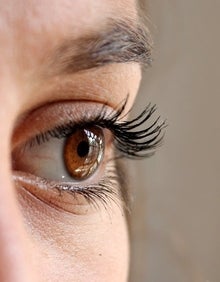Background
The global eye testing equipment market was valued at USD $2.64 billion in 2017 and is expected to reach $3.91 billion by 2025, registering a CAGR of 5.0% from 2018 to 2025. Significant increase in the incidence of eye-related disorders, particularly cataract and glaucoma across the world has played a major role in driving the growth of eye testing equipment market. Glare is defined as difficulty or discomfort seeing in the presence of either bright or reflected natural (i.e. sunlight) or artificial (i.e. oncoming car headlights) light. Problems with glare are greater in older individuals, individuals with cataracts, individuals with a wide variety of ocular diseases, and after acquired brain injury. To satisfy the Affordable Care Act in the U.S., physicians are looking for ways to identify and quantify glare, particularly as regulatory groups are looking to create standards or thresholds for surgical procedures (e.g. Cataract surgery).
Description of the invention
Current commercially available glare tests have limitations. They either place the glare source close to eye limiting the field of view or place the glare source(s) on a phoropter (instrument containing banks of prescription lenses instead of using the patient’s own spectacles), which is an artificial situation. Others use a hand-held device, measure glare for only one eye at a time and measure the amount of light that is scattered within the eye (rather than the change in function).
Waterloo’s innovative technology addresses all of these issues. It consistently produces the same light level for all individuals using the test. It also allows for the same degree of glare to be presented for targets at different distances from the observer and to both eyes. It can be used with targets of any size, which means it can be used with people with very poor vision as well as normal vision. It can also be used with any chosen measure of vision (i.e. not restricted to static letter charts) or functional vision (i.e. in a driving simulator). Finally, it also allows the observer to move or perform tasks with both hands while experiencing glare, which none of the current commercially available devices allow.
Advantages
- Measures glare binocularly
- Measures the effects of glare on any visual function and with any background illumination
- The observer can wear his/her own spectacles or contact lenses
- The observer can simultaneously undertake tasks that involve movement or hand manipulation
- Development of new clinical methods for quantifying glare
Potential applications
- Optometrists and eye-care practitioners especially those involved in direct patient care in areas of low vision, sports performance and concussion.
- Evaluation of the impact of assistive devices to determine if they are actually producing the outcome they are designed to produce.
- Can be used to determine if a patient should be referred for additional treatment (e.g. Cataract surgery).

Reference
10156
Patent status
US provisional filed
Stage of development
Prototype developed, looking for
industry partners to validate results
Contact
Scott Inwood
Director of Commercialization
Waterloo Commercialization Office
519-888-4567, ext. 33728
sinwood@uwaterloo.ca
uwaterloo.ca/research